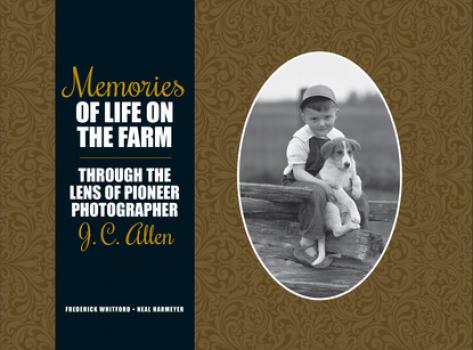ТОП просматриваемых книг сайта:
Frederick Whitford
Список книг автора Frederick WhitfordАннотация
Virginia Claypool Meredith's role in directly managing the affairs of a large and prosperous farm in east-central Indiana opened doors that were often closed to women in late nineteenth century America. Her status allowed her to campaign for the education of women, in general, and rural women, in particular. While striving to change society's expectations for women, she also gave voice to the important role of women in the home. A lifetime of dedication made Virginia Meredith <QUOTE>the most remarkable woman in Indiana<QUOTE> and the <QUOTE>Queen of American Agriculture.<QUOTE> Meredith was also an integral part of the history of Purdue University. She was the first woman appointed to serve on the university's board of trustees, had a residence hall named in her honor, and worked with her adopted daughter, Mary L. Matthews, in creating the School of Home Economics, the predecessor of today's College of Consumer and Family Sciences.
Информация о книге
Автор произведения Frederick Whitford
Жанр Биографии и Мемуары
Серия The founders series
Аннотация
Today, Purdue Extension delivers practical, research-based information that transforms lives and livelihoods. Tailored to the needs of Indiana, its current programs include Agriculture and Natural Resources, Health and Human Sciences, Economic and Community Development, and 4-H Youth Development. However, today's success is built on over a century of visionary hard work and outreach. Scattering the Seeds of Knowledge: The Words and Works of Indiana's Pioneer County Extension Agents chronicles the tales of the first county Extension agents, from 1912 to 1939. Their story brings readers back to a day when Extension was little more than words on paper, when county agents traveled the muddy back roads, stopping at each farm, introducing themselves to the farmer and his family. These Extension women and men had great confidence in the research and the best practices they represented, and a commanding knowledge of the inner workings of farms and rural residents. Most importantly, however, they had a knack with people. In many cases they were given the cold shoulder at first by the farmers they were sent to help. However, through old-fashioned, can-do perseverance and a dogged determination to make a difference in the lives of people, these county Extension agents slowly inched the state forward one farmer at a time. Their story is a history lesson on what agriculture was like at the turn of the twentieth century, and a lesson to us all about how patient outreach and dedicated engagement-backed by proven science from university research-reshaped and modernized Indiana agriculture.
Аннотация
William Carol Latta was the 13th member of the Purdue faculty. He became the driving force behind Purdue's world-famous School of Agriculture and initiated extension services that have lasted for more than a century. In 1890, he laid out the first permanent soil fertility field experiments, inaugurating a system of research considered one of the best in the country at that time. He administered Purdue's School of Agriculture until 1907.
Аннотация
The key role that farming plays in the economy of Indiana today owes much to the work of John Harrison Skinner (1874-1942). Skinner was a pioneering educator and administrator who transformed the study of agriculture at Purdue University during the first decades of the twentieth century. From humble origins, occupying one building and 150 acres at the start of his career, the agriculture program grew to spread over ten buildings and 1,000 acres by the end of his tenure as its first dean. A focused, single-minded man, Skinner understood from his own background as a grain and stock farmer that growers could no longer rely on traditional methods in adapting to a rapidly changing technological and economic environment, in which tractors were replacing horses and new crops such as alfalfa and soy were transforming the arable landscape. Farmers needed education, and only by hiring the best and brightest faculty could Purdue give them the competitive edge that they needed. While he excelled as a manager and advocate for Indiana agriculture, Skinner never lost touch with his own farming roots, taking especial interest in animal husbandry. During the course of his career as dean (1907-1939), the number of livestock on Purdue farms increased fourfold, and Skinner showed his knowledge of breeding by winning many times at the International Livestock Exposition. Today, the scale of Purdue's College of Agriculture has increased to offer almost fifty programs to hundreds of students from all over the globe. However, at its base, the agricultural program in place today remains largely as John Harrison Skinner built it, responsive to Indiana but with its focus always on scientific innovation in the larger world.
Информация о книге
Автор произведения Frederick Whitford
Жанр Прочая образовательная литература
Серия The founders series
Аннотация
Информация о книге
Автор произведения Frederick Whitford
Жанр Изобразительное искусство, фотография
Серия Founders Series





